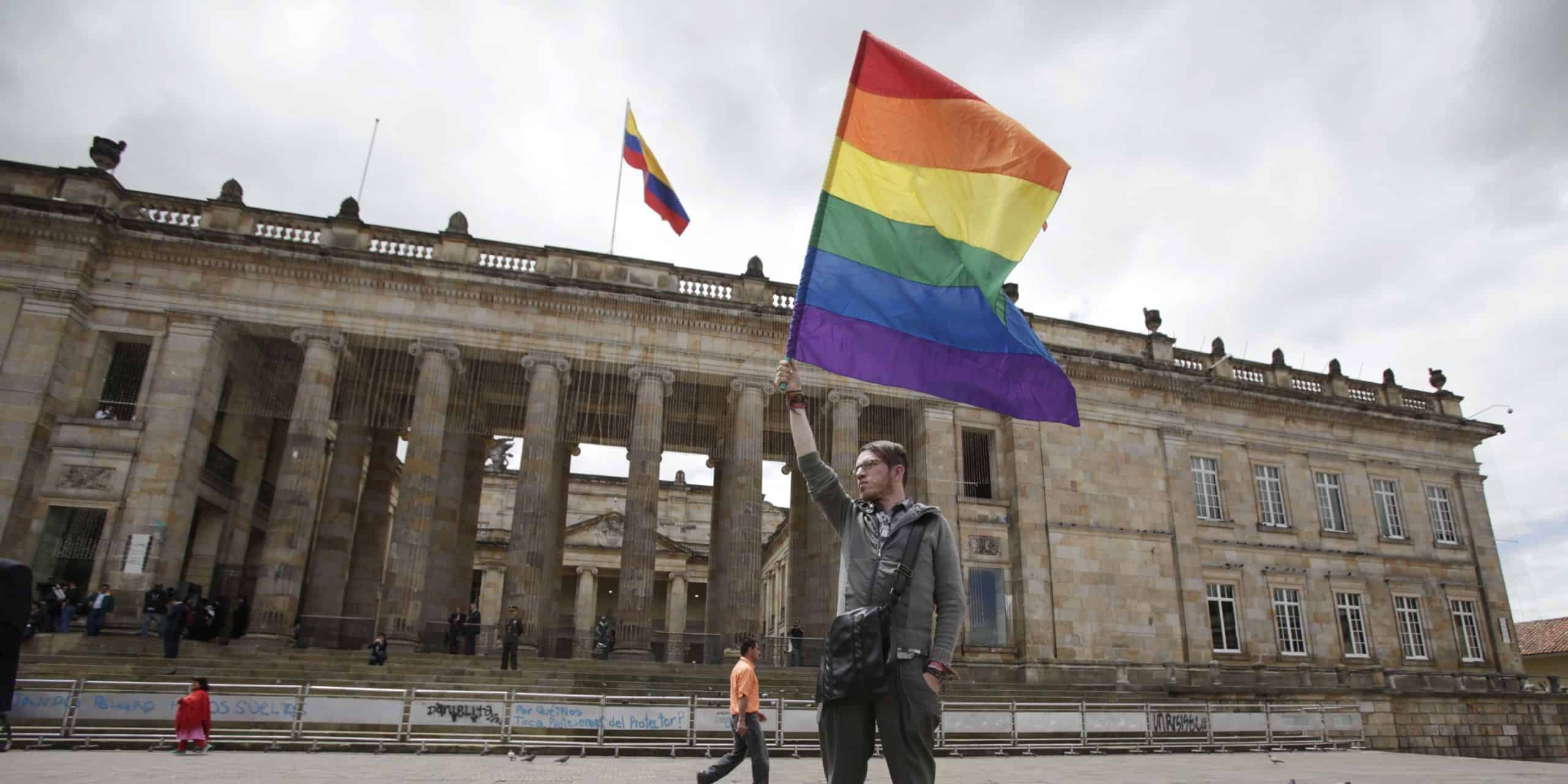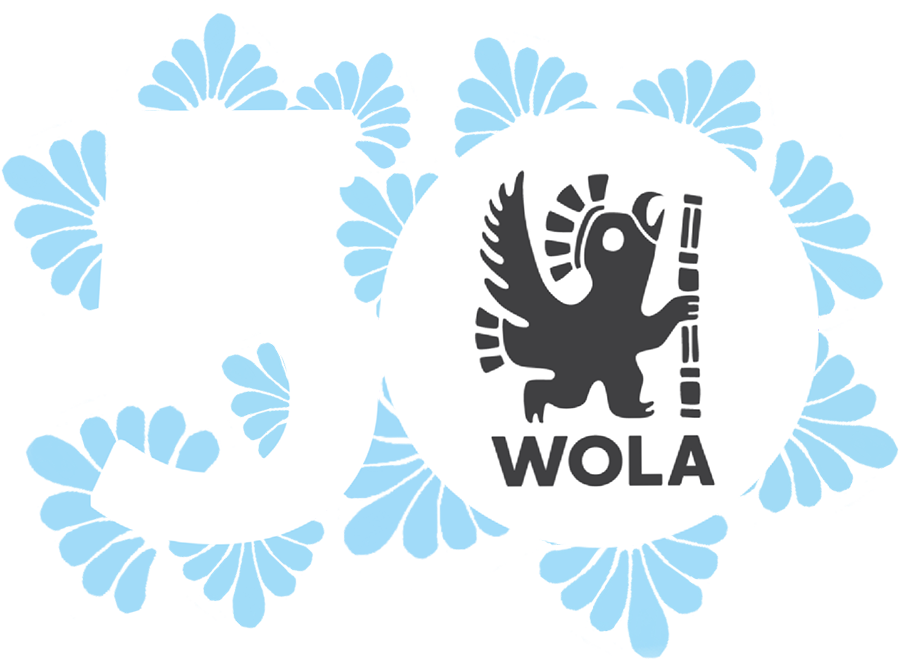Lesbian, gay, bisexual, transgender, and intersex Colombians have been granted momentous protections over the past two decades. Included in these feats is the historic recognition of LGBT+ people in the peace process with the Revolutionary Armed Forces of Colombia (FARC), the first in the world to specifically include LGBT+ people. But nonetheless, ongoing violence against the LGBT+ community, especially against trans people, reflects a longstanding paradox in Colombia: on paper, the country has one of the strongest legal frameworks in Latin America defending the rights of LGBT+ people; however, in practice these protections are rarely enforced.
After Brazil, Colombia is perhaps the most dangerous country in the Americas for LGBT+ people. Last year, a study found that, out of nine countries in Latin America and the Caribbean, Colombia registered the highest number of killings of LGBT+ people over a five-year period. In 2020, attacks against LGBT+ leaders and trans people continue even amid the COVID-19 lockdown. So far this year, in the Caribbean region alone, at least 15 LGBT+ people were killed. As Pride Month comes to an end, civil society groups and Colombia’s LGBT+ community persist in an ongoing struggle to combat stigmatization, secure justice for past crimes, and ensure that authorities implement protections as guaranteed under the law.
Colombia at the forefront of the LGBT+ movement in Latin America
Colombia has experienced significant milestones in terms of political and other forms of representation for LGBT+ people, paving the way towards a more inclusive society. In October 2019, Bogotá elected Claudia López as their first woman and lesbian mayor. Various elected representatives across national, departmental, and local levels like Andrés Cancimance in Putumayo and Oriana Zambrano in La Guajira identify as LGBT+. Television shows continue to feature more LGBT+ characters and media coverage of LGBT-related issues has grown more consistent. These increased levels of visibility are a result of tireless campaigns by civil society groups and activists that work to educate and transform society.
Legal victories led by local civil society organizations and grassroot movements have lent significant momentum to the fight for LGBT+ equality in Colombia. In 2015, trans people over the age of 18 were given the right to change their legal gender on all identification documents. The following year, same-sex marriage was legalized. Other progressive legislation upholds the right for LGBT+ individuals and couples to adopt, protections on employment discrimination and hate crimes, and explicit penalties set in the National Police Code for any acts of gender-based discrimination. These landmark decisions by the Constitutional Court and legislation enacted by the Colombian Congress are legal breakthroughs that place Colombia at the forefront of the LGBT+ movement in Latin America.
Even the historic 2016 peace agreement between the Revolutionary Armed Forces of Colombia (FARC) and the government of Colombia contains a differential focus on gender. Through a Gender Subcommittee that included an LGBT+ representative, the negotiating actors recognized that women and LGBT+ people were disproportionately affected by the armed conflict, and correspondingly, 41 gender-specific provisions were included throughout the agreement. Including this focus on women and LGBT+ groups helped make Colombia’s 2016 peace deal one of the most inclusive peace agreements in history. According to LGBT+ rights group Colombia Diversa, though many of these provisions remain stalled, about 70 percent have at least begun implementation.
One key mechanism in the peace agreement includes the Special Jurisdiction for Peace (Jurisdicción Especial para la Paz, JEP), one of three separate components that make up the current transitional justice system. As a result of the work conducted by Colombia Diversa and Caribe Afirmativo, the most prominent LGBT+ organizations in the country, the JEP opened two cases on the persecution of LGBT+ people during the armed conflict. Two reports submitted by the organizations to the JEP outline the systematic violence perpetrated by the FARC and paramilitary groups against LGBT+ people in Nariño and Antioquia. The JEP is therefore the first transitional justice tribunal in the world to recognize that, in the scope of the armed conflict, LGBT+ people were targeted because of their sexual orientation and gender identity.
The backlash against a so-called “gender ideology”
Discrimination towards the LGBT+ community still persists in Colombia, the result of longstanding stereotypes and misinformation spread about gender identity and sexual orientation. This harmful rhetoric is expressed in part through an opposition movement seeking to curtail greater recognition of LGBT+ rights, rallying against a so-called “gender ideology.” This questionable argument is not unique to Colombia and the Americas; it is a global strategy led by evangelical factions that seek to undermine the rights of women and LGBT+ persons. Proponents of this argument target LGBT+ organizations because their existence and work defy the patriarchy, heteronormative norms, and religious beliefs.
In 2014, student Sergio Urrego died by suicide after facing discrimination from school officials because of his sexual orientation. Following this tragedy, the Constitutional Court ruled in 2015 that school handbooks across the country had to be revised to address bullying of LGBT+ students. Then, in 2016, Former Minister of Education Gina Parody, who also happens to be a lesbian woman, obeyed the ruling and published an extensive manual with recommendations to schools on how to prevent discrimination and how to have conducive conversations with students about gender identity and sexual orientation. It ignited national controversy, however, as evangelical and conservative sectors claimed that the Ministry of Education was promoting homosexuality and indoctrinating a “gender ideology” among schoolchildren.
These same sectors were mobilized to sustain fierce opposition to the peace process with the FARC. Propaganda around the so-called “gender ideology,” supposedly embedded in the peace agreement, ultimately contributed to the failed 2016 plebiscite. The final peace agreement with the FARC in November 2016 removed several references to “gender’”and “LGBTI”, and even downright eliminated any mention of the term “sexual orientation.”
While the 2016 peace agreement still affords recognition to LGBT+ people, the removal of these specific references to appease to conservative sectors is indicative of the powerful role that LGBT+ prejudice continues to play in Colombian society. It also reveals the continued need to ensure protection and guarantees to LGBT+ Colombians, even outside the framework of the peace agreement.
Violence against LGBT+ Colombians
Anti-LGBT+ rhetoric contributes to alarming increases in hostility and violence against queer Colombians. Between 2014 and 2018, over 545 LGBT+ Colombians were assassinated. Members of the public security forces are most responsible for acts of violence and harassment against LGBT+ Colombians, according to a 2020 report by Colombia-based NGO Temblores. This violence highlights the concerning gap between Colombia’s progressive legal protections and the actual enforcement of said protections.
Unfortunately, gathering current data on such abuses and violence against LGBT+ Colombians is limited for various reasons. Wilson Casteñada, director of human rights group Caribe Afirmativo, notes that local organizations are largely responsible for documenting cases of LGBT+ violence. State entities do not maintain databases that register these abuses, and when they do exist, they lack the political will and funding to be maintained properly. Additionally, there is a strong probability that violence against LGBT+ people by public security forces is underreported, as those who experience this violence may be reluctant to go to the authorities to report these crimes. All this contributes to a lack of detailed data on violence and crimes not just against Colombia’s LGBT+ community, but across the region.
Transphobia
Transphobia is rampant in Colombia. Trans people who are sex workers face particularly extreme levels of violence and harassment because stigmatization around sex work increases the risk that such reports of violence are not taken seriously. This was seen in a recent case on May 29 when Alejandra Monocuco died after she was wrongly denied medical treatment and transportation to the hospital in an ambulance. On June 20, five transgender sex workers were brutally attacked by members of the Colombian National Police in Bogotá. These incidents are commonplace because cultural stigmas allow for physical and structural violence against the trans community.
The exclusion faced by trans Colombians was also made evident in the state’s emergency response to the COVID-19 pandemic. Under pico y género, a sex-based quarantine measure temporarily implemented in Bogotá and Cartegena, women and men were allowed out for essential tasks on alternating days of the week; trans women and men could go out according to their gender identity. According to trans rights organization Red Comunitaria Trans, in Bogotá the policy resulted in some 20 cases of targeted discrimination against trans people. The measure is an example of how state policies often overlook the realities of discrimination and institutional violence against gender nonconforming and trans people.
The struggle for LGBT+ rights must continue
LGBT+ Colombians have many reasons to celebrate. But their battle for ensuring the enforcement of gender identity and sexual orientation protections continues. Implementing and enforcing the mechanisms designed in the peace agreement are also challenges that not only affect LGBT+ people, but also affect Afro-Colombian and Indigenous communities who are silenced in similar ways.
It is precisely the work of civil society groups and activists that made the current feats possible and this work must be amplified. The international community should continue to hold authorities accountable for enforcing the laws set forth to protect the rights of LGBT+ people. And ultimately, that support must account for the intersections among class, race, ethnicity, and disability that deepen the discrimination faced by the LGBT+ community in Colombia and beyond.



